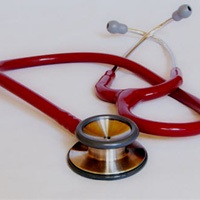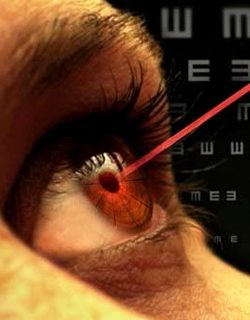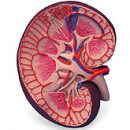In this article, its authors share their thoughts on the automation of a network of medical organizations.
Content
 One of the notable trends of recent times has been the development of networks covering several medical organizations. And this trend is noticeable not only in the capitals, but also in the regions. Of course, the history of some organizations of this type began not yesterday. Since the USSR, existently develop groups of departmental clinics. The economic growth of the last decade gave a powerful impetus to such phenomena as corporate network clinics and not directly related to corporations private medical networks.
One of the notable trends of recent times has been the development of networks covering several medical organizations. And this trend is noticeable not only in the capitals, but also in the regions. Of course, the history of some organizations of this type began not yesterday. Since the USSR, existently develop groups of departmental clinics. The economic growth of the last decade gave a powerful impetus to such phenomena as corporate network clinics and not directly related to corporations private medical networks.
It is necessary to make a reservation that under the phrase «Network of medical organizations» This refers to a group of organizations, which, regardless of the organizational and legal form of individual units or groups in it as a whole and regardless of the details of the management system, combined with the presence of general organizational, material and technological resources.
In other words, within the network there is a fairly free, although not always strictly formalized, exchange frames, means and information. Commercial networks, as a rule, have the total composition of the owners, although franchising schemes have also appear and recently appear. In government agencies, elements of the network structure can be presented, as an option, in the form of regulatory and administrative ties between organizational units.
Apparently, here the medical community, adhering to a conservative approach to clinical practice, should be in line with the overall development of management. As in other industries, the network model reduces the administrative costs, to form the service standards, to obtain the effect of scale on procurement and T.D. and T.NS.
Obviously, following organizational solutions to create or expand networks and technology should be tightened. Us, as automation specialists, are primarily interested in an information aspect of interaction within the network structure and its technological embodiment. Subject of this article - Features of automation of network structures in health care. This will be discussed which requirements for information systems a network of medical organizations than these requirements differ from the projects of automation of separate organizational units, which are promising directions for the development of information technologies in this area.
Awareness of the benefits of network solutions occurs already at all levels of management. For example, automation, medical institutions concluded by the territorial health management body gives a fundamentally different effect than the fragmented equipment new, let them even be the best, technologies of individual clinics and complex medical centers. This effect is similar to the effect from the emergence of the central nervous system in living organisms. It is due to a set of new features, which will be described in detail below, but which for simplicity can be reduced to three key principles:
- availability of information resources common to the entire network;
- replication of common data from one center;
- Consolidation of data and information in the Unified Center.
On the requirements of the Network of Medical Organizations to the Information System
What information on the information system makes any network of medical organizations? First of all, it is necessary to provide the same access to customer information. It is necessary that each structural unit or each clinic in the network has the opportunity to obtain an electronic history of the patient's disease. Satisfying this requirement - the minimum condition so that you can start talking about the unified network information space.
What is it for? Suppose the patient moved and in a new place of residence also uses the services of the same network clinic, but the other branch is already the one that is closer. Or take another, an even more typical case when the laboratory is located separately from the polyclinic. In this case, a technological solution is required, which will ensure the operational transmission of the electronic direction on research and equally promptly obtaining data on the results by the attending physician.
In a situation where diagnostic instrumental studies are conducted in another organization, it is quite possible to exchange not only textual, but also more resource-intensive multimedia information. It can be X-rays, ultrasound diagnostic readings, tomograms. Modern technique makes it possible to do not only static images, but also video. All this, improves requirements not only to data transmission channels, but also to medical applications.
Another key requirement for the information system for medical organizations is to ensure access from any point of the network to information about resources and work modes. The most typical example is the possibility of viewing the work schedule of doctors another clinic or a separate division. It is desirable that this feature is available not only for doctors and administrative staff. Ideally, the information system should maintain the possibility of a remote patient recording on reception in another branch, as well as an independent recording of patients via the Internet. For the network, it gives a more optimal resource allocation, and for a patient - faster maintenance, which is not at all superfluous for many types of diseases.
In addition to the centralized update of the standards of treatment, drug directories, reference books for the discharge of preferential drugs, etc.D. The network of medical organizations is extremely important to ensure the replication of certain types of information directly related to therapeutic process. For example, basic reference books, and for the commercial clinics - the provision of services, with the possibility of modifying the general version in accordance with the working conditions of remote units (branches, subsidiaries, other dependent structures).
The reverse process is also important - the consolidation of financial data, the indicators of the loading of the unit, the consumption of drugs and materials - everything that can be useful for subsequent analysis. Consolidated reports are interested in primarily decision makers, managers or state supervisory authorities.
Moreover, the analysis of the data can be performed simple and accessible tools. But if the network is large enough, and the network management organization or head clinic has the appropriate capabilities, you can create a data warehouse and then use specialized Business Intelligence class applications (BI), which will allow managers to receive not only standard reports, but also consider data under the most different An angle of view, find non-obvious connections and dependencies between different indicators.
Pupgeting and consolidation functions can be in demand and to improve interaction with insurance companies.
Of course, there are quite a lot of differences between the requirements of commercial networks and public (state and municipal) medical institutions. So, for commercial networks, data efficiency and functionality, ensuring financial accounting at all levels. Compulsory medical statistics are more relevant for publication, information exchange with the compulsory medical insurance fund (and with insurance medical organizations) and unification both at the general reporting level and in the context of special government programs aimed at combating socially significant diseases.
Differences in the requirements are determined not only by the form of ownership. No less important factor - territorial location of the network, the mutual remoteness of the organizational units included in it. Private network configuration is distinguished by a variety. Founders may follow the principle «One city is one clinic». Some are focused on the density of the market, others - on local co-investors or the purchases of the franchise.
Public medical facilities, as a rule, can not afford such flexibility in accommodation, - which is understandable - they must ensure the solution of the tasks assigned to them, regardless of the provisions of the inhabitants of the region and the economic situation. Similarly, the region or the city, when he decides to combine accountable medical and preventive institutions in the information network, is trying to cover all the institutions, regardless of their performance indicators.
These differences in network topology generate different approaches to the decision architecture. Well-wired commercial network clinics create their own telecommunications infrastructure, in the center of which has a powerful data center (DATE-CENTER). In this model, even medical applications can be physically located in a single center. This approach is fully justified under the condition that each network node, each organizational unit has guaranteed high-speed access to centralized data and applications.
Networks that do not have large opportunities or scattered in different regions choose the data replication model. This model places more modest requirements for communication channels, but it requires sufficiently reliable software and thoughtful information exchange mechanisms.
Design work on the automation of medical networks also has its own characteristics. Automate a separate medical organization or a whole network clinics - tasks of different complexity. The transition from a single structure to the network raises the bar not only for communications and software, but also for the team engaged in the implementation of software and technological solutions.
It is extremely desirable that the head of the network itself is either the head of the network itself, or its closest deputy - otherwise the automation project may face great difficulties and, in the end, will not be able to enter the planned indicators.
It is further important to emphasize that we are talking about the team inside the network organization, and not just about the experts of the supplier of the information system. To reduce risks and costs, medical organizations must have their IT specialists who will be able to master and purchased in the technology market, and key project procedures, and accompaniment procedures. Experience in training and training such professionals unequivocally testifies that even a small information service in a medical organization can significantly improve the quality of implementation and reduce the cumulative costs of ownership of the system.
The automation experience of other industries suggests that such a model of interaction between enterprises or institutions with external contractors is optimal, in which technology suppliers ensure the development of their decisions, and the IT division of the Customer at each stage of development gradually takes routine functions and procedures that are not Require from performers a narrow specialization or permanent creativity - for example, such as replicating applications for new branches or user training.
Network automation in the normal case is divided into several stages. At the same time, on one of the early stages, work is carried out only in favorites, «pilot», Division and only then, when all the main technologies are running and tested, transferred to the remaining structural units of the network. In some cases, work on a pilot clinic can stretch for a long time. But such delays are usually fully justified, considering the fact that errors identified at earlier stages fix much easier than errors multiplied on the scale of the network.
Fashion on network creation causes a logical question: whether we will come to the fact that all Russian medical institutions will enter into one network and will be covered by a unified information system. In fact, this is, of course, two and even three different questions: belonging to a certain network, access to network information resources and the possibility of a single software and technological solution.
For example, clinics have access to the Internet, can be considered covered by this network. But they, of course, not «owned» of this network. And most of them have different information systems. Apparently, this situation will continue in the future. There are other factors that impede the creation of too large information systems. For example, different decision makers, or different levels of responsibility in the hierarchy of public administration, different interests and opportunities - these circumstances will work on maintaining the diversity of technical solutions.
There are, of course, both technological, and serious legal restrictions on which it is worth talking separately. At the current stage of the development of information and, which is especially important, organizational technologies, attempts to build information «vertical» In such a fine area as medicine and health care is hardly crowned with success. At the same time, the trend towards the combination of medical institutions into large networks, the trend towards consolidation and unification will most likely be maintained. In the public sector, this trend is usually due to the need for more operational control over the work of the subordinate institutions, in the commercial sector - the desire for saving based on the effect of the scale..
The current variety of software and technical solutions meets the objective needs of various medical organizations, various priority systems, finally different financial and personnel opportunities. Competition between these solutions is an important factor in improving the availability of information technologies for medicine.
After all, even in the largest cities, the penetration of medical applications in everyday practice is measured by units of interest on the total number of medical organizations. Obviously, in such conditions, unification is possible and appropriate only at the legislative level, at the level of uniform industry standards of electronic document management and publicly available information exchange mechanisms. For example, in the form of a single all-Russian and regional medical certifying centers for electronic digital signature technology.
If you try to evaluate the prospects for different technologies based on the current situation and the principal assumption of the manifold of technical solutions, then the most serious chances have those solutions where replication mechanisms are provided. Decisive advantages will receive those developers of network applications that, firstly, will offer reliable means of installing and adjusting software and hardware across a distributed network, and, secondly, the utility replication tools will be created.
The first task is the reliability of the installation and adjustment - easier. Precedents of its decisions can be observed in various industries where information technologies are applied. Nevertheless, as it is not surprising, the technology of alienation of a software product (that is, the transmission of real control over the technical solution) has not yet become a mandatory requirement for providers of medical applications. But without these technologies it is difficult to talk about any successful development of the information system as part of a network organization.
The solution of the second task will mean a real breakthrough in the technology of medical networks. Take, for example, the head clinic in the network, which creates a new specialized department for this network or simply adds an additional specialty to the staff of the existing units, which was previously presented in it. The process replication mechanism would allow all the standards and a clinical practice tested in one place for all other organizations of this network.
Thus, the coverage of medical organizations in the network communication infrastructure has a great future. From among the operators of the medical services market, someone will rather introduce information systems in their activities, has chances to make it economical and more efficient in comparison with the rest. Breakthrough in the technology of medical networks, and therefore in the effectiveness of medical activities in economic circulation will provide replication of useful settings, due to which any organizational innovations immediately receive ready-made information support. Thus, organizational problems and challenges that are facing both medical organizations and health authorities, as well as the institutions of health financing, can largely find a solution in the field of information technology, network organization of the microeconomics of the industry.









